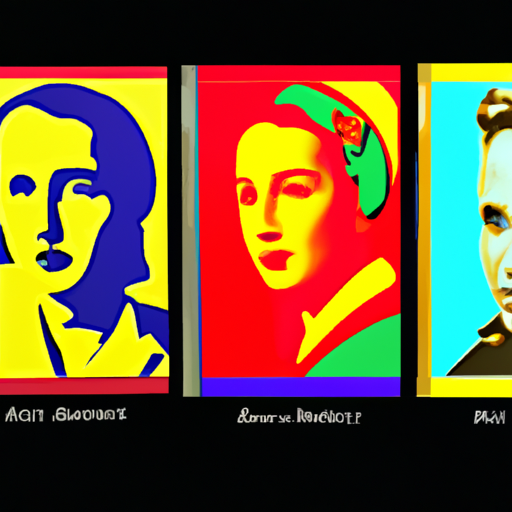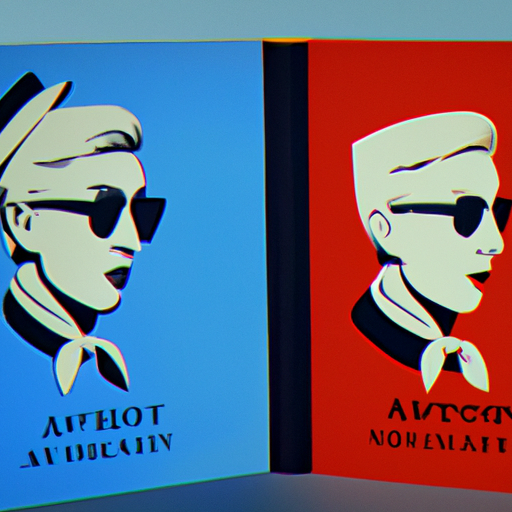
-
Table of Contents
The Art of the Book: Cover Design Through the Ages

Books have been an integral part of human civilization for centuries. From ancient scrolls to modern paperbacks, books have not only served as vessels of knowledge but also as works of art. One of the most important aspects of a book’s visual appeal is its cover design. The cover is the first thing that catches a reader’s eye and can make or break their decision to pick up a book. In this article, we will explore the evolution of book cover design through the ages, from the earliest examples to the present day.
The Early Days: Ancient Book Covers
In ancient times, books were not bound in the way we are familiar with today. Instead, they were often written on scrolls made of papyrus or parchment. These scrolls were rolled up and tied with a string or ribbon. While the scrolls themselves were not adorned with elaborate cover designs, they were sometimes stored in decorative containers made of wood or metal. These containers, known as caskets or caskets, often featured intricate carvings or engravings that reflected the importance of the texts they contained.
One notable example of ancient book cover design is the Lindau Gospels, a 9th-century illuminated manuscript. The cover of the Lindau Gospels is made of gold and silver and is adorned with precious gemstones. The intricate design features a central crucifixion scene surrounded by angels and other religious motifs. This lavish cover not only protected the sacred text but also served as a symbol of the book’s importance and value.
The Middle Ages: Illuminated Manuscripts
In the Middle Ages, book production became more sophisticated, and the art of illumination flourished. Illuminated manuscripts were painstakingly created by scribes and illuminators who added decorative elements such as illustrations, borders, and initials to the pages of the book. The covers of these manuscripts were often made of wood and covered in leather or velvet. They were sometimes embellished with metalwork, gemstones, and embroidery.
One of the most famous examples of medieval book cover design is the Book of Kells, an illuminated manuscript created around the 9th century. The cover of the Book of Kells is made of wood and covered in red leather. It is adorned with intricate metalwork and gemstones, including a large crystal in the center. The cover reflects the intricate and colorful illustrations found inside the book, which depict biblical scenes and ornamental designs.
The Renaissance: Ornate Bindings
The Renaissance brought about a renewed interest in classical art and culture, and book cover design was no exception. During this period, book bindings became more ornate and elaborate. Leather bindings were often tooled with gold or silver, and the covers were adorned with intricate designs and motifs.
One notable example of Renaissance book cover design is the Aldine Press, a publishing house founded by Aldus Manutius in Venice in the late 15th century. The Aldine Press produced books with distinctive bindings featuring the Aldine anchor and dolphin device. These bindings were not only aesthetically pleasing but also served as a branding tool for the publishing house.
The Modern Era: Artistic Freedom
In the modern era, book cover design has become a form of artistic expression. With advancements in printing technology and the rise of graphic design, book covers have become more diverse and creative. Artists and designers have the freedom to experiment with different styles, colors, and typography to create visually striking covers that capture the essence of the book.
One example of modern book cover design is the Penguin Classics series. Penguin revolutionized book cover design in the mid-20th century by commissioning renowned artists and designers to create covers for their books. The Penguin Classics series features iconic covers by artists such as Edward Young, Paul Rand, and Coralie Bickford-Smith. These covers not only reflect the content of the books but also serve as collectible works of art.
The Digital Age: E-books and Digital Covers
The advent of e-books and digital publishing has brought about new challenges and opportunities for book cover design. With e-books, the cover is often the only visual representation of the book, as there is no physical copy to hold. This has led to a greater emphasis on creating eye-catching and memorable digital covers.
One example of digital book cover design is the cover for “Gone Girl” by Gillian Flynn. The cover features a close-up of a woman’s face with half of her face obscured by text. This cover design not only captures the suspenseful nature of the book but also stands out in the digital marketplace.
Conclusion
Book cover design has come a long way since the ancient scrolls of the past. From the intricate carvings of ancient caskets to the digital covers of e-books, book covers have evolved to reflect the changing times and artistic trends. Whether it’s a medieval illuminated manuscript or a modern graphic novel, the cover of a book plays a crucial role in attracting readers and conveying the essence of the content within. As technology continues to advance, it will be fascinating to see how book cover design evolves in the future.
